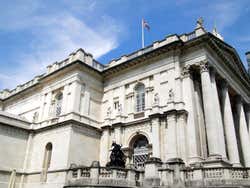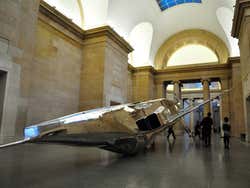
Tate Britain
The Tate Britain Gallery houses the world's largest collection of British art. Opened in 1897, it was the first of the Tate network that currently includes the Tate Modern, Tate Liverpool and Tate St Ives.
Exploring Tate Britain
Tate Britain’s extensive collection covers over 500 years of creativity, including artworks from major British artists from 1500 until the present day.
The main British art collection is displayed in chronological order, including galleries dedicated to one only artist and other halls exhibiting art in a more historical context.
The permanent collection is divided into three sections:
- Historic British art: Halls 1 to 15. In this area you’ll find artwork from 1500 until 1900. The most popular works of art are the Tudor and Stuart portraits, as well as paintings by British artists such as William Blake and William Hogarth.
- British modern art: Halls 16 to 25. These rooms cover artwork from 1900 to 1960. In these rooms you will find paintings by Stanley Spencer, Paul Nash or Henry Moore.
- Contemporary British art: Rooms 26 to 38. Art from 1960 until the present day. Paintings by Francis Bacon, Peter Blake or Damien Hirst can be found in these halls.
Getting to Tate Britain by boat
In our opinion, there are more interesting museums to visit. However, if you decide to go to Tate Britain we recommend getting to the museum by the Tate Boat, a boat that connects Tate Modern with Tate Britain.
If you’re only in London for a few days, we then recommend missing this museum out.



Schedule
Open daily: 10 am to 6 pm
Price
Free entry
Transport
Boat: The Tate Boat runs every forty minutes down the River Thames, between Tate Modern and Tate Britain.
Tube: Pimlico, Victoria line.
Bus: 2, 3, C10, 36, 87, 88, 159, 185, 436 and 507.
Nearby places
Westminster Abbey (960 m) Westminster Palace (1.1 km) Big Ben (1.1 km) St James’s Park (1.4 km) Imperial War Museum (1.4 km)
